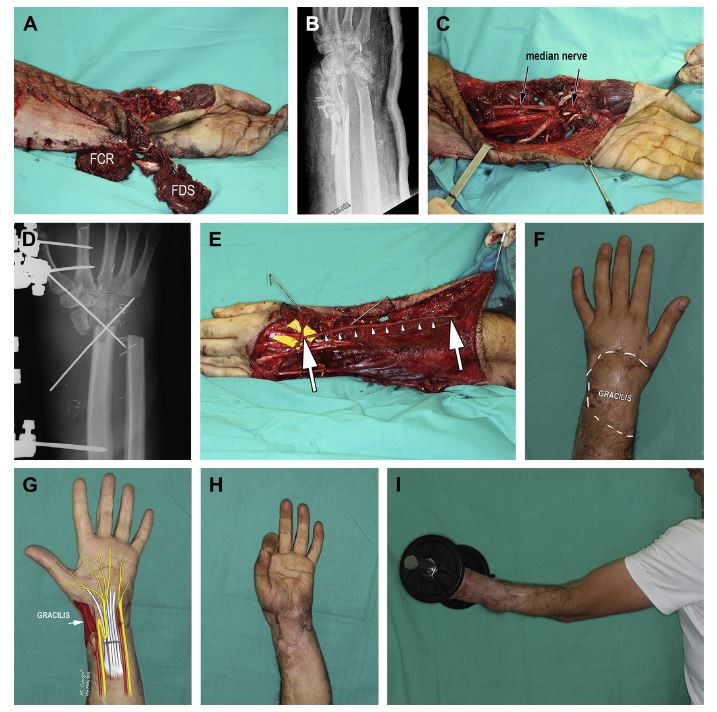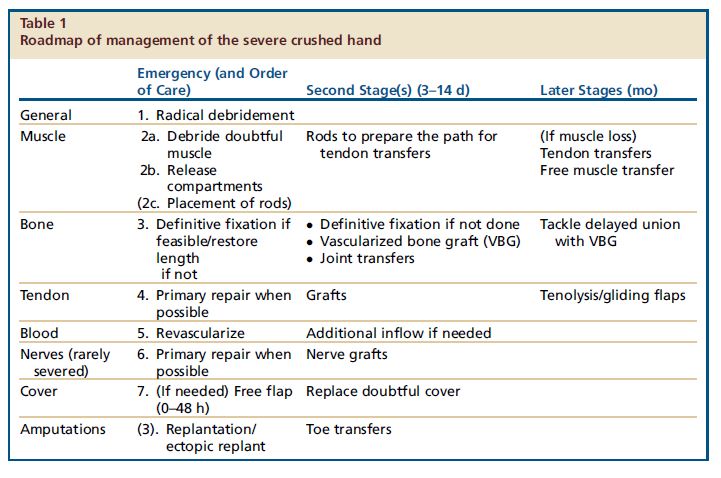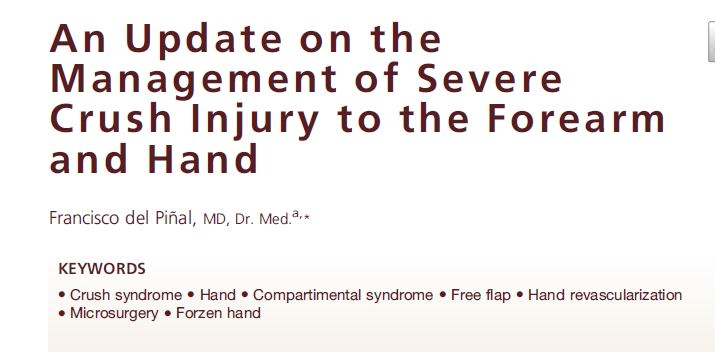您可以阅读下面手动翻译成英文的翻译。 您还可以通过单击右上角的徽标访问原始西班牙语。 通过此链接,您可以使用简体中文访问自动翻译的Google版本: http://bit.ly/3aNoDfm
In his latest article for Clinics in Plastic Surgery, the Spanish surgeon analyzes the impact of microsurgery in improving the prognosis of the most serious cases (catastrophic hand syndrome), and how to improve function in cases that are already in sequels phase. They can also benefit from reasoned surgery.
Piñal considers severe crush pictures as one of the most feared injuries by hand surgeons, which can lead to a useless limb and even late amputation. All this, in clinical contexts in which the subsequent appearance of stiffness, deep infections and chronic pain due to bone and neurovascular damage is usual.
In his article ‘An Update on the Management of Severe Crush Injury to the Forearm and Hand‘ (Clinics in Plastic Surgery Volume 47, issue 4, p461-489, October, 2020), the Spanish surgeon shows how the debridement of necrotic tissues, rigid fixation and intensive use of microsurgery to speed recovery improve the prospects for the most severe crush cases; through the elimination of infection foci, the reconstruction of stable bone structures or the supply of vascularized tissue that provides a gliding surface.

In turn, in this work the author illustrates how adipofascial free flaps together with bone-forming free flaps contribute to creating the appropriate conditions for the healing of this type of pictures; in which toe-to-hand transfers can play a key role in functional improvement of digital defects.


Piñal raises the need to differentiate the pathophysiology of the forearm, wrist, metacarpal area and fingers, to avoid the progression of a focused trauma to a frozen hand with more devastating results than the original injury itself. A separation that the text maintains in its analysis of pathologies and treatments through detailed case studies.
From his point of view, crush injuries pose a “phenomenal challenge” when treated as emergencies, while their approach in the chronic phase requires a real feat of surgery. Reconstruction surgery in this sort of case – says Piñal – demands exhaustive planning, with four pillars arranged in the following order: debridement, bone management, damaged neurovascular structures and soft tissue defects.
 es
es en
en fr
fr it
it ru
ru zh-hans
zh-hans
